
by Luke Schmaltz | Mar 19, 2021 | General Featured
“The number one rule of thieves is that nothing is too small to steal.” – Jimmy Breslin
 by Luke Schmaltz
by Luke Schmaltz
A large number of Denver residents are sitting on top of a hidden treasure and they don’t even know it.
Below the interior cabs of all modern cars, along the vehicle’s undercarriage parallel to the driveshaft, sits the exhaust system in a series of pipes, gaskets and couplings. Within this assembly, for all cars made after 1975, is a catalytic converter — a filter which transforms harmful exhaust compounds (hydrocarbons, nitrogen oxide and carbon monoxide) into inert gases.
This piece of automotive technology contains semi-precious metals which are crucial to the catalyzing process. These include palladium, rhodium and platinum — rare metals that are sought after and valued on par with gold. It is no secret to enterprising thieves that these components can fetch between $150 and $300 per unit from scrap yards and chop shops — and sometimes even more.
Amid the economic hardship of the past year, the risk-to-reward ratio of catalytic converter theft is attractive enough for someone with a few tools and nothing to lose to take action. Anyone with enough nerve and a bit of know-how can simply crawl beneath a car in the middle of the night and start hacking away. Vulnerable cars are everywhere — parked

Theft On The Rise: Catalytic converter theft is up 1600% in the Denver area from 2019.
on the street, in parking garages, strip malls and driveways. As jobs disappear, pandemic relief runs out, and perhaps a bad case of cabin-fever boredom takes hold — car part pirates set out to find their livelihood amid a vast urban landscape abundant with low-hanging fruit.
The number of thefts across Denver is on the rise like the temperature gauge on an overheating vehicle. In 2019, a total of just 15 were reported, while in 2020, the cases jumped up to a staggering 257. Meanwhile, 2021 is on par to leave that number in the dust, as 108 cases of stolen catalytic converters were reported by the end of January.
The Winners
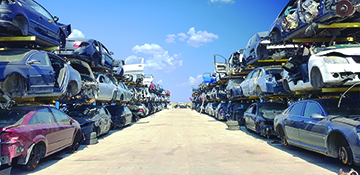
Junkyard: Catalytic converters make a quick stop at a place like this so the precious metals therein can be removed.v
Experienced thieves who know where to slither and hack can get away with half a dozen or more converters per night. Doorbell cameras have captured these heists taking place with alarming speed — some in under two minutes. Once these are sold to a scrap yard or fenced to a black-market processing facility, the thief makes a few bucks and the next guy (the fence) digs into the devices, harvests the precious metals therein and sells them to a dealer. While laws are in place that supposedly forbid scrap metal dealers and junkyards from accepting stolen goods, there is by no means a task force monitoring these markets. If thieves are bold enough to break the law in plain sight, what’s to stop them from continuing to do so until the valued goods find their way back into the supply chain?
Next in the catalytic converter economic stimulus line are the auto repair shops. As this is becoming a routine procedure, the parts can be replaced with a fair degree of quickness and ease. Yet, parts and labor cost money and even if the mechanic is an honest one, they’ll be billing each client anywhere from $1,000 to $3,000 per job.
The Losers
The victim’s experience is invariably the same. A vehicle owner gets in their car, turns the ignition key to start the engine and is jolted upwards by a roaring blast of exhaust from beneath. In previous years, the individual may have thought it was just a temperamental automotive glitch that would work itself out. More recently, however, a person in this scenario quickly comes to the harrowing realization that part of their car has been stolen right out from underneath them.
After a sputtering, cantankerous trip to the mechanic, they are hit with a repair bill that most likely places yet another degree of economic strain on an already dire situation. While folks with comprehensive insurance coverage can send the bill to their carrier, a great many drivers out there do not have such coverage because they are trying to save money, and when they bought their insurance, rampant car part theft was probably not yet on their radar.
The Also-rans

Catalytic Converter: If you want to keep your catalytic converter, knowing how to weld is a valuable skill.
The associated fallout of these thefts is the additional burden that is placed on the Denver Police Department. While there is little or nothing that responding officers can do to recover the stolen part, there is considerable strain in terms of the man hours it takes to follow up on every case, to fill out paperwork and to listen to the victims tell their stories.
Enough Is Enough
Across the Mile High City, people are becoming increasingly aware that they could very well be the next victim in line to have their catalytic converters stolen. The obvious solution is to park your car in a garage, lock it up for the night and the problem is solved. The problem with that, is that the vast majority of car owners, especially in neighborhoods near the city center, do not enjoy such luxuries.
High profile vehicles like SUVs, Hummers and 4×4 trucks are the easiest targets, as they do not need to be jacked up off the ground in order for the thieves to access the converter. A smart driver on a shoestring budget can opt to park their Prius between a Ford F-250 and a Land Rover and hope their neighbors bear the brunt of the thievery instead of them.
Proactive citizens can sit up all night and guard their cars with a flashlight and a baseball bat. Yet, most people enjoy their sleep and do not wish to confront criminals in the pale moonlight. Thankfully, this scourge of theft has necessitated a suite of new inventions designed to keep your catalytic converter attached to your car’s exhaust system and out of the hands of criminals. In yet another economically beneficial outcome of the rise in theft, these devices range anywhere from $125 to $700 or more apiece, plus installation if you’re not handy with tools. These products are carving out a market niche for themselves under names such as The Cat Clamp, Cat Security, Cat Strap and more.
- Cat Strap: This alarm-style device features contact and motion sensors. The strap is tethered along the length of the exhaust system (which includes the catalytic converter) by a series of metal clamps and rings. The sensor is then wired to the battery and the alarm receiver is mounted beneath the hood. Contact with the exhausts system or significant motion beneath the car in the vicinity of the catalytic converter will set it off. Thief activity beneath your car sets off the alarm, which then deters the perpetrator. Professional installation is recommended.
- Cat Security: This device is strictly hardware, and acts as a type of shield between your catalytic converter and the ground. The product is essentially sheet metal which is pre-fabricated to fit the undercarriage of specific models of cars. The shield is then bolted into place with a combination of security rivets, bolts and self-tapping screws. The protective barrier is immediately obvious to and should convince most thieves to think again. Professional installation is optional.
- Cat Clamp: Another hardware-based product, this invention uses braided, heavily-rated steel cables and heavy-duty steel clamps and adaptor plates which, once mounted and installed, surround your catalytic converter in a metal cage. The various product sizes can accommodate everything from regular sized cars to large, heavy duty diesel trucks. Hardware and cable run the length of the exhaust system and present an immediate visual deterrent to thieves — as it is obvious the catalytic converter is not coming off without a whole lot of effort and noise. Professional installation recommended.
Extreme Measures
A similar approach is to have the catalytic converter welded to your car’s frame, which would make it much harder and far more time consuming to steal. Another method is to have your car alarm system recalibrated to detect the subtle humming of a reciprocating saw or the light tog of a ratchet wrench. Other folks are engraving their car’s VIN number to the housing on the converter, which to an average thief might be a deterrent, but to an enterprising criminal — it might be an invitation to pursue identity theft.
The other options are to string barbed wire around your car every night and risk getting cited for littering or reckless endangerment. You could train rattlesnakes to coil up in the undercarriage at night and take a swipe at anything that crawls under the car. Or you could just sell the damn thing and get a bike — along with an arsenal of four or five heavy duty U-locks.

by Luke Schmaltz | Mar 19, 2021 | Glendale City News
“We cannot change anything until we accept it. Condemnation does not liberate, it oppresses.” – Carl Jung
 by Luke Schmaltz
by Luke Schmaltz
At the onset of 2020, most folks were not familiar with the term social distancing. For all the average citizen knew, it could have meant that your network of friends and associates was so big that it covered vast distances. But, as everyone knows all too well, that’s not what it meant. The result was a pandemic-distressed public that had to quickly train itself to curtail a deep-seated set of automatic social behaviors.

Social Distancing: A little over a year ago, few people knew what this meant. Now, it’s an all too familiar phrase.
Several hallmarks of normal social behavior were pinpointed as instances of human interaction that accelerated the spread of Covid-19. And so, in the spirit of self-preservation, an outgoing society deeply invested in handshakes, hugs and hellos became a sequestered, suspicious, lonely, paranoid populace — resentful of itself for being deprived of itself.
Social distancing restrictions are expected to lift in tandem with the vaccine rollout. There is a pervading hesitancy among many, however, to become relaxed too soon — floating the possibility that another surge in cases could take hold and then the whole mess starts over again. Yet, in the backs of the minds of many, are those blurry, joyous, pre-pandemic memories of exuberant greetings, boisterous gatherings and loving embraces. Lest they be lost to the righteousness of newly-converted germaphobia, a refresher course of America’s beloved social customs is in order.
Handshakes

Handshake: There is some speculation that the Coronavirus may spell the end of handshakes.
This universal gesture of goodwill has been in use for millennia and is evidenced in the archaeological record as far back as 500 BC. The handshake exists as a greeting, in one form or another in most cultures the world over and symbolizes alliance and trust between parties. Historians theorize that it was originally designed to show that neither person was carrying weapons in their right hand, with the shaking motion designed to dislodge any knives or other implements hidden up the sleeve. Today, elaborate variations on the palm-to-palm clasp have been invented as specialized greetings between members of an exclusive group or a codice of a secret affiliation. Regardless, this ice-breaker of a social mannerism is an essential conversation starter in the worlds of business and in leisure alike.
Pro tip: Do not deliberately crush the hand of the person you are greeting, as it eradicates the entire purpose of the gesture. Also, grabbing the offered hand and yanking the person toward you as a show of dominance can guarantee they will not be shaking your hand again anytime soon.
Fist Bumps And High Fives

High Five: The high five is another greeting that may have contracted a permanent case of Coronavirus-itis.
While the former could be a toned-down version of the latter, both are internationally renowned gestures of affinity which originated in America. The fist bump first became popular in the 1970s and is thought to be dually appropriated from an incognito version of the Black Panther power symbol and the catalyzing magic ring touch of the Wonder Twins in the popular Super Friends cartoon. Also, the fist bump is the most benign of the hand-based greetings — used exclusively by the germ-conscious such as TV game show host Howie Mandell. Meanwhile, the high-five can be traced back to professional baseball players in the 1950s. As a celebration of success while the world was watching, it was a much-needed salute for triumph during intense moments when a handshake simply would not suffice.
Pro tip: First bumps are just that, a friendly tap so no matter how excited you are to see someone, do not punch their knuckles. To avoid embarrassing misses on high-five attempts, be sure to focus on your target — the center of your acquaintance’s palm. Otherwise, a spirited swat could turn into a flailing flap.
Hugs

Free Hugs: It is a proven scientific fact that hugs are good for you and free — most of the time.
Hugs in private between family members, especially mother and child, have been around since the dawn of mankind. Yet, the hug did not become a staple of Western public life until American celebrities and leaders co-opted it from their Latin and European counterparts in the mid-to-late 20th Century. The hug was popularized by entertainers like Sammy Davis Jr. and politicians like Jimmy Carter. Until recently, it was ubiquitous in relaxed, informal social situations and was an unspoken essential between family and friends. The expression, “You look like you could use a hug” is a result of this, because it has been found that the human embrace can provide comfort and reassurance in powerful ways where words and facial expressions fall short. In an article recently published by Time.com, researchers at Carnegie Mellon University’s Laboratory for the Study of Stress, Immunity and Disease reported, “ … [hugs] were associated with an uptick in positive mood markers and a reduction in negative ones; the opposite was true of relationship conflict. And on days when both occurred, people tended to report fewer negative feelings and more positive ones than on days when they experienced conflict but no hugs.”
Pro tip: Don’t be a long hugger unless the occasion is one of intense emotion. A momentary embrace will suffice. Also, the side hug where just one shoulder is offered rather than a full embrace is like shaking hands with just your thumb and forefinger. Go all in or don’t go at all.
Verbal Greetings
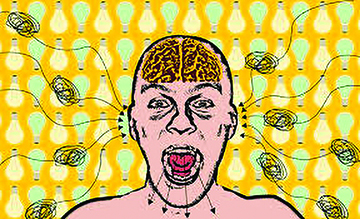
Screaming: Screaming at one another is a time-honored Western birthright.
Over the last year, folks going about their business in public have been trying to decipher mask-muffled language and the internal moods of their counterparts by just the emotions shown in the eyes. Yet, since talking and yelling (among other mouth-related functions) are the very mechanism through which the disease has been shown to spread, this behavior is under considerable scrutiny. In America, however, the freedoms of self-expression guaranteed by our first Amendment rights are practically ingrained in every citizen’s DNA. It’s only a matter of time before dudes are yelling across lanes of heavy traffic to get the attention of their buddy across the street and tipsy women are shrieking like banshees upon recognizing an old friend in a crowded bar. Spoken language is essential to the human condition and using it at high volumes is a distinct characteristic of Western culture.
Pro tip: For the last year, you’ve been observing the practice of not spitting into the face of the listener when you speak. Try to keep that.
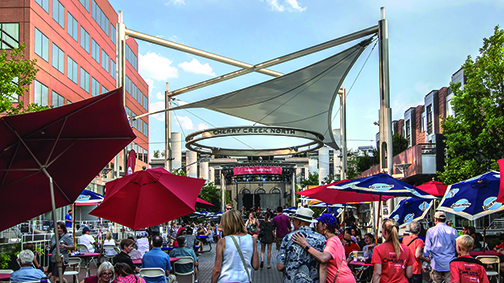
by Luke Schmaltz | Mar 19, 2021 | Main Articles
“This is the power of gathering: it inspires us, delightfully, to be more hopeful, more joyful, more thoughtful … more alive.” – Alice Waters
 by Luke Schmaltz
by Luke Schmaltz
It is with hopeful trepidation that most Denverites look to the summer months. Yet, while the vaccine rollout is having a diminishing effect on the pandemic, it may still be too soon to dig the picnic basket out of the attic. Regardless, Denver offers a dizzying array of festivals, fairs and outdoor events every year. Sadly, as most residents know all too well, most of them had to be skipped in 2020. With any luck, circumstances just might improve to where the simple joy of gathering with friends to enjoy the warm weather, great food and diverse entertainment the Mile High City’s legendary events have to offer.
“Pandemic fatigue” is one of the softer terms folks are using to call what most honest people are describing with more vivid language such as extreme shut-in fever, Covid-19 craziness, or isolation delirium. While reaching herd immunity through vaccination is a process that disrupts nature in a good way, social distancing is fairly unnatural for most, and could be blamed for the all-too ubiquitous modality of depression and malaise among the populace.
Taste Of Colorado
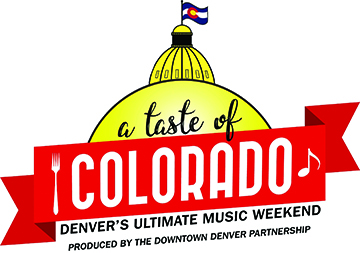
Taste: Taste of Colorado draws hordes of hungry visitors to downtown Denver every year.
Originally dubbed the Festival of Mountain and Plain, this gathering was established in 1895, and revived in 1983 by the Downtown Denver Partnership. Every year, restaurateurs, foodies, chefs, sauciers, pastry cooks and gustatory retail vendors of every stripe gather to market their businesses, showcase their talents and sell their treasures. The event happens every Labor Day weekend and is tentatively scheduled for September 4, 5 and 6, 2021. Britt Diehl, Senior Manager of Public Policy & Special Projects at DPP, explains, “… unfortunately we don’t have anything to report at this moment — we are looking at options based on public health guidelines/outlooks.”
CHUN People’s Fair
Every summer, the Capitol Hill United Neighborhoods Association (CHUN) throws a party in Denver’s Civic Center Park that offers something for anyone and everyone. This celebration of music, creativity and diversity welcomes artists, performers and spectators from every background imaginable in a two-day event that features music on over half a dozen stages. Typically held over the first weekend of June, the Fair was canceled in 2019 amid rumors of declining revenues and in 2020 for obvious reasons. Whether it is set for a resurgence in 2021 remains to be seen.
Cherry Creek Arts Festival

Arts Festival: The Cherry Creek Arts Festival hosts artists of every sort from around the world.
This event is perhaps the most approachable of all the offerings in an otherwise upscale, exclusive district. 2021 marks the 30th anniversary of this celebration of “Artivity” otherwise known as “Art for Everyone.” The event features “visual and performing arts and educational and immersive art experiences” and attracts upwards of 350,000 visitors along with 260 local and regional artists and hosts. The date for 2021 is yet to be set in stone, but if it takes place, it will most likely do so over the Fourth of July weekend — Friday, Saturday and Sunday, July 2, 3 and 4.
First Fridays
Denver art lovers have a total of six art walks to choose from on the first Friday of every month. These varied and diverse offerings take place across an array of vastly different districts and offer the city’s finest in galleries, museums and studios. These art walks take place in the River North Arts District, the Art District of Santa Fe, Golden Triangle Museum District, Tennyson Street Cultural District, South Pearl Street and 40 West Arts District and Block 7 Galleries. The latter is the most family-friendly of the lot, featuring a variety of dining options, a movie theater and a wintertime ice rink. Visitors to the previous five gatherings can expect to encounter a diverse offering of food trucks, restaurants, bars and breweries. Face masks are currently required by most establishments.
Cinco de Mayo
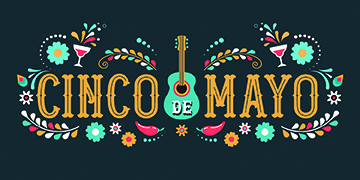
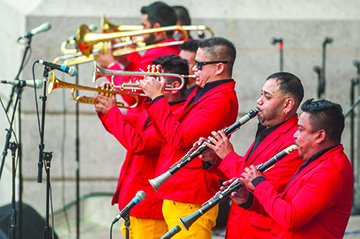
Cinco de Mayo: Cinco de Mayo is a beloved cultural tradition that will be celebrated regardless of an event being scheduled for downtown Denver.
This festival commemorating the victory of the outnumbered Mexican Army over French forces during the 1862 Franco-Mexican War takes place on or around the 5th of May. This year, that date falls on a Wednesday, so the tentative Civic Center Park celebration will take place on the weekend prior — depending on what event planners decide in what will most likely be an 11th-hour verdict. The two-day event attracts over 400,000 visitors and is particularly well known for offering an incredible array of Colorado Mexican cuisine and hosting events such as the Green Chili Bowl Cook-Off, a taco eating contest, a lowrider car show, and the infamous Chihuahua races.
The Colorado Dragon Boat Festival

Dragon Boat: The Colorado Dragon Boat Festival lights up Sloan’s Lake Park and has a definite date set for September 2021.
This unique gathering describes its mission as “the premier organization celebrating and promoting the culture, contributions and accomplishments of Colorado’s Asian-American and Pacific Islander (AAPI) communities.” Thankfully, this year’s event has a set date for September 25 and 26, in Denver’s Sloan’s Lake Park. Historically, the festival has taken place in July, but for 2021 event planners are no doubt hedging their bets on the theory that the pandemic curve will most likely flatten by fall rather than summer. Visitors can expect an otherworldly immersion in arts, entertainment, cuisine and of course — dragon boat races.
Large gatherings which are sanctioned and approved by the powers that be will return eventually, here’s to hoping it is sooner than later.

by Mark Smiley | Mar 19, 2021 | Featured Stories & Advertisers

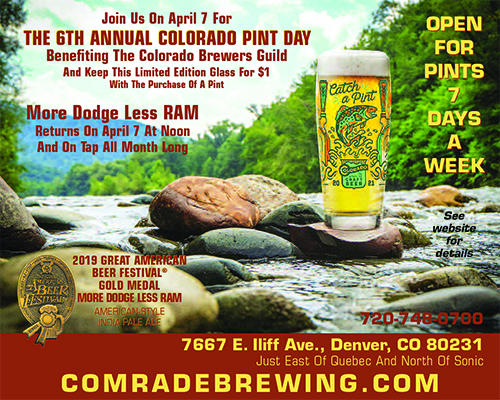
by Mark Smiley | Mar 19, 2021 | Featured Stories & Advertisers

















